Newsletter – October 2021

October, 2021
Dear HOS Members,
This NEWSLETTER will be dedicated to the “Discovery of the American Continent, Exploration of the World by Spain and Contributions by Spaniards in the United States.” In my opinion all the misinformation/disinformation for the last 500 years must be confronted with the facts of history.
There were three events (discoveries) that would change the way we envision the world forever:
1. In 1492, Queen Isabel of Spain pays for Christopher Columbus (Cristóbal Colon) expedition to the Indies. October 12, 1492, Columbus discovers new land.
2. On 1513, Vasco Nuñez de Balboa discovers a new body of water. Today we call it the Pacific Ocean. This is only 21 years after Columbus found new land.
3. On 1519, Spain sends the Magellan-Elcano Expedition to the Spice Islands. Magellan was killed in the Philippines in 1521. Juan Sebastian Elcano returned to Spain in 1522 accomplishing the first circumnavigation of the World! (This is within 30 years of the discovery of the American Continent!).
Spain not only discovered the American continent, discovered the Pacific Ocean, was the first in circumnavigating the planet, made possible the Independence to the USA, gave independence to most of Central and South America. Even today without Hispanics the USA would probably not be able to function. One of the main problems is that most Hispanics do not know or understand the impact that we have in the USA.
Hispanics need to be proud of their heritage in this country and learn more about Hispanic history in the United States of America.
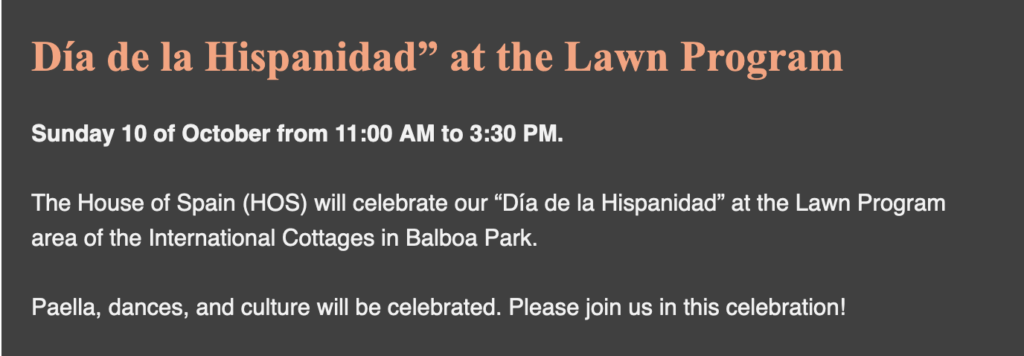
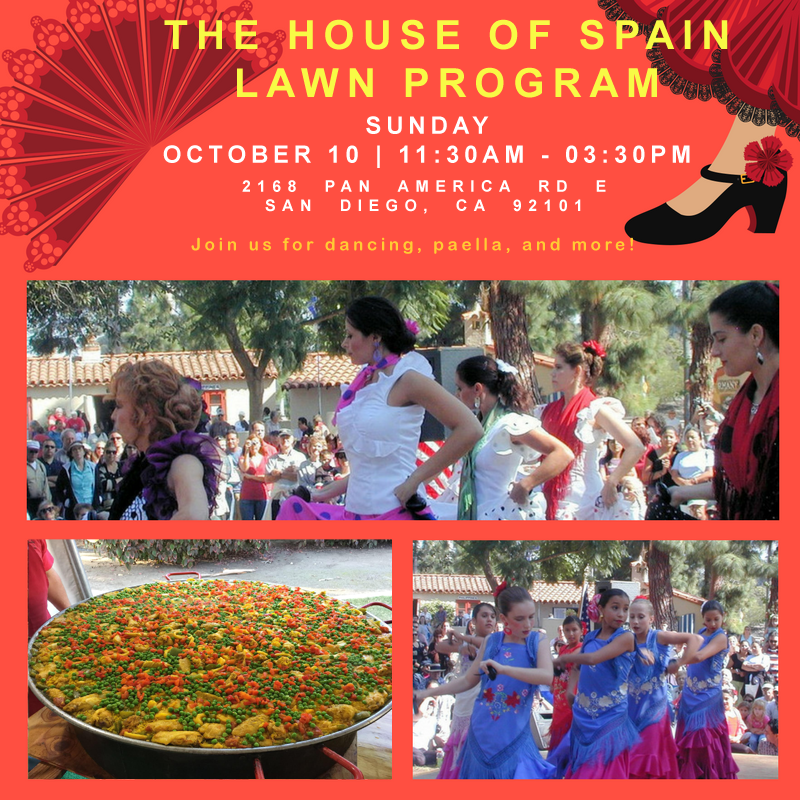
America’s Hidden Heritage
A very eloquent video and history can be seen on the ”America’s Hidden Hispanic Heritage” a video lecture by Miguel Perez:
The Balance of Spain in America is the Best
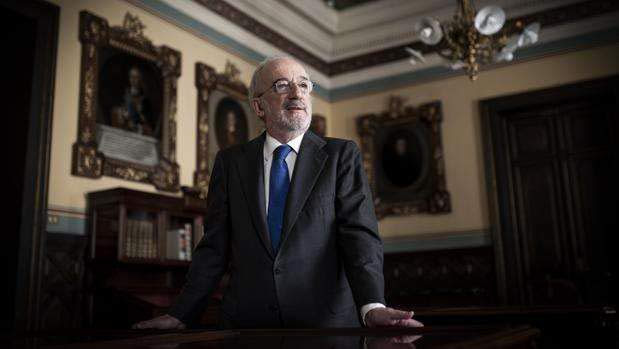 Santiago Muñoz Machado: «The balance of Spain in America is the best»
Santiago Muñoz Machado: «The balance of Spain in America is the best»The lawyer publishes «Civilize or exterminate the barbarians», which dismantles the black
legend analyzing the Spanish philosophical and legal effort in the 16th century.
|
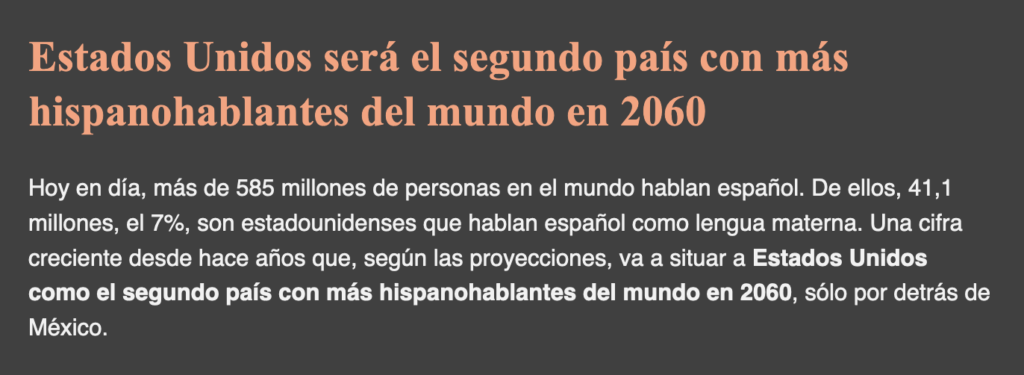
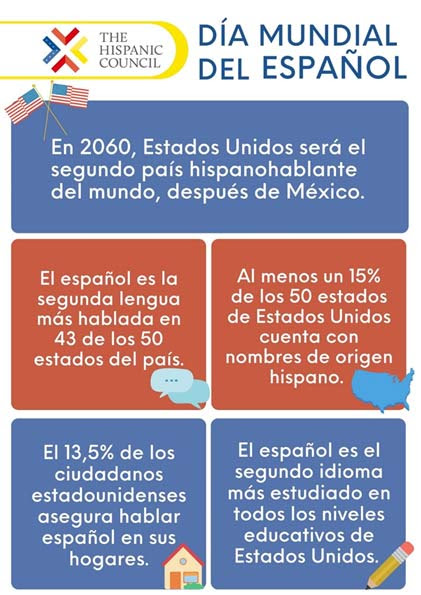
España no conquistó América; la liberó
Marcelo Gullo, Buenos Aires
Estimado señor presidente de la República de México don Andrés Manuel López Obrador. El pasado 13 de agosto, en ocasión de cumplirse el 500 aniversario de la liberación -para usted caída- de Tenochtitlán citó textualmente, sin nombrarme, un párrafo de la entrevista que el diario ELMUNDO tuvo a bien realizarme el viernes 23 de julio a raíz de la publicación en España de mi libro Madre Patria. Desmontando la leyenda negra desde Bartolomé de las Casas hasta el separatismo catalán.
En su discurso usted afirmó: «Hay asuntos que deben aclararse en la medida de lo posible. Por ejemplo, hace unos días un escritor pro-monárquico de nuestro continente afirmaba que España no conquistó a América, sino que España liberó a América, pues Hernán Cortés, cito textualmente, ‘aglutinó a 110 naciones mexicanas que vivían oprimidas por la tiranía antropófaga de los aztecas y que lucharon con él’». Usted también me acusó sin ningún tipo de pruebas -y sin haberse tomado siquiera la molestia de ojear mis antecedentes académicos o de recabar información sobre mi trayectoria política antimperialista- de ser un representante del pensamiento colonialista.
Coincidiendo con su apreciación de que hay asuntos que deben aclararse quisiera recordarle que, como afirma el arqueólogo mexicano Alfonso Caso, quien fuera rector de la Universidad Nacional Autónoma de México, «el sacrificio humano era esencial en la religión azteca». Es por ese motivo que en 1487, para festejar la finalización de la construcción del gran templo de Tenochtitlán -del cual usted, el pasado 13 de agosto, inauguró una maqueta monumental- las víctimas del sacrificio formaban cuatro filas que se extendieron a lo largo de la calzada que unían las islas de Tenochtitlán. Se calcula que en esos cuatro días de festejo los aztecas asesinaron entre 20.000 y 24.000 personas.
Sin embargo Williams Prescott, poco sospechoso de hispanismo, da una cifra más escalofriante. «Cuando en 1486 se dedicó el gran templo de México a Huitzilopochtli, los sacrificios duraron varios días y perecieron 70.000 víctimas». Juan Zorrilla de San Martín en su libro Historia de América relata que «cuando llevaban los niños a matar, si lloraban y echaban lágrimas, más alegrábanse los que los llevaban porque tomaban pronósticos que habían de tener muchas aguas en aquel año».
«El número de las víctimas sacrificadas por año», tiene que reconocer Prescott, uno de los historiadores más críticos de la conquista española y uno de los más fervientes defensores de la civilización azteca, «era inmenso. Casi ningún autor lo computa en menos de 20.000 cada año, y aún hay alguno que lo hace subir hasta 150.000». Marvin Harris en su famosa obra Caníbales y reyes relata: «Los prisioneros de guerra, que ascendían por los escalones de las pirámides, […] eran cogidos por cuatro sacerdotes, extendidos boca arriba sobre el altar de piedra y abiertos de un lado a otro del pecho con un cuchillo… Después, el corazón de la víctima -generalmente descripto como todavía palpitante- era arrancado… El cuerpo bajaba rodando los escalones de la pirámide…».
¿Dónde eran llevados los cuerpos de los cientos de seres humanos a los cuales, en lo alto de las pirámides, se les había arrancado el corazón? ¿Qué pasaba luego con el cuerpo de la víctima? ¿Qué destino tenían los cuerpos que día a día eran sacrificados a los dioses? Al respecto, Michael Hamer que, ha analizado esta cuestión con más inteligencia y denuedo que el resto de los especialistas, afirma que «en realidad no existe ningún misterio con respecto a lo que ocurría con los cadáveres, ya que todos los relatos de los testigos oculares coinciden en líneas generales: Ias víctimas eran comidas».
Los numerosos trabajos científicos -tesis doctorales, libros publicados por prestigiosos académicos de fama mundial- con los que contamos hoy, no dejan lugar a dudas de que en Mesoamérica había una nación opresora, la azteca, y cientos de naciones oprimidas, a las cuales los aztecas no solo le arrebataban sus materias primas -tal y como han hecho todos los imperialismos a lo largo de la historia- sino que les arrebataban a sus hijos, a sus hermanos… para sacrificarlos en sus templos y luego, repartir los cuerpos descuartizados de las víctimas en sus carnicerías, como si fuesen chuletas de cerdo o muslos de pollo para que esos seres humanos descuartizados, sirvieran de sustancioso alimento, a la población azteca.
La nobleza se reservaba los muslos y las entrañas se dejaban al populacho. Las evidencias científicas con las que contamos hoy, no dejan lugar a dudas al respecto. Era tal la cantidad de sacrificios humanos que realizaban los aztecas de miembros de los pueblos por ellos esclavizados que con las calaveras construían las paredes de sus edificios y templos.
Es por eso que, el 13 de agosto de 1521, los pueblos indios de Mesoamérica oprimidos por los aztecas festejaron la caída de Tenochtitlan. Como usted, señor presidente, tuvo que reconocer en su discurso, a regañadientes y entre líneas, es materialmente imposible pensar que, con apenas 300 hombres, cuatro arcabuces viejos y algunos caballos, Hernán Cortés pudiera derrotar al ejército de Moctezuma integrado por 300.000 soldados disciplinados y valientes. Hubiese sido imposible, aunque los 300 españoles hubiesen tenido fusiles automáticos como los que hoy usa el Ejército español.
Miles de indios de las naciones oprimidas lucharon, junto a Cortés, contra los aztecas. Por eso, su compatriota José Vasconcelos afirma que «la conquista la hicieron los indios».
¿Y que aconteció después de la conquista, después de esas primeras horas de sangre, dolor y muerte? Todo lo contrario de lo que usted afirma. España fundió su sangre con la de los vencidos y con la de los liberados. Y recordemos que, fueron más los liberados que los vencidos. México se llenó de hospitales, colegios bilingües y universidades. España envió a América a sus mejores profesores y la mejor educación fue dirigida hacia los indios y los mestizos. Permítame recordarle, señor presidente, que tan respetuosos fueron los libertadores españoles -perdón: los conquistadores- de la cultura de los mal llamados pueblos originarios que en 1571 se editó en México el primer libro de gramática de lengua nahualt, es decir 15 años antes de que en Gran Bretaña se publicara el primer libro de gramática de lengua inglesa. Todos los datos demuestran que, al momento de su independencia de España, México era mucho más rico y poderoso que los Estados Unidos.
Perdóneme usted, señor presidente, que me vaya un poco por las ramas, pero quisiera sugerirle, con todo respeto, que el próximo 2 de febrero, cuando se cumpla un nuevo aniversario del ignominioso tratado de Guadalupe Hidalgo -por el cual los Estados Unidos arrebataron a México 2.378.539 kilómetros cuadrados de su territorio- usted realice un gran acto como el que organizó para el 13 de agosto. Que para realzar el mismo, invite al presidente de los Estados Unidos Joseph Biden y en un gran discurso, cuando esté ante el presidente estadounidense, le exija que pida perdón al pueblo mexicano por haberle robado Texas, California, Nuevo México, Nevada, Utah, Colorado y Arizona, tierras que fueron indiscutiblemente parte de México.
Por último estimado presidente quisiera contarle que, como desde niño siempre me he sentido ligado sentimentalmente a los pueblos oprimidos -quizás por haber nacido en un hogar humilde de la ciudad de Rosario en la República Argentina-, si pudiese viajar en el túnel del tiempo, una y mil veces, me sumaría a los apenas 300 soldados de Hernán Cortés que, con el coraje más grande que conoce la Historia, liberaron a los indios de México del imperialismo antropófago de los aztecas.
Rafael Guastavino, Spanish architect that changed New York architecture
Rafael Guastavino: el arquitecto valenciano que reinventó Nueva York (y se ganó a Jackie Kennedy) | ICON Design | EL PAÍS
https://www.youtube.com/watch?
https://elpais.com/elpais/
https://www.google.com/amp/s/
Libro sobre su vida. R. Guastavino por Javier Moro titulado “A Prueba de Fuego”.
Gracias a Consuelo Porto Taboada por este articulo
Alejandro Finisterre: la increíble vida del gallego que inventó el futbolín
Inventor, poeta, editor, secuestrado y más tarde secuestrador… Alexandre de Fisterra siempre contaba orgulloso que el Che nunca le logró ganar a su invento.
Este 2019 se cumplen 100 años del nacimiento de un ilustre gallego que fue poeta, escritor, editor, inventor, miembro de la Real Academia Galega, aventurero, republicano y leyenda, cuyo apellido tomó prestado del lugar que le vio nacer. A lo largo de la historia, surgen personas que nacen para vivir una continua aventura y así fue como Alejandro vivió su vida.
Bombardeado, exiliado, traicionado, secuestrado y secuestrador, su biografía es digna de una superproducción de Hollywood. Llegó a jugar con su invento frente al mismísimo Che Guevara, al que siempre ganaba. Esta es la historia de otro genio gallego, la historia de Alejandro Finisterre, también conocido como Alexandre de Fisterra. Mas información
Ramón Verea: El gallego que inventó la calculadora moderna hace 150 años
IVÁN FERNÁNDEZ AMIL
En Constitution Avenue, Washington DC, se encuentra uno de los museos más importantes del mundo, el Museo Smithsonian de Historia Natural. En este edificio se ha expuesto uno de los artefactos más revolucionarios que el ser humano haya creado jamás, una calculadora. Propiedad de una de las más grandes multinacionales del planeta, IBM, y custodiado actualmente en su Sede Central en Nueva York, se encuentra uno de los grandes inventos de nuestra historia, que un gallego de A Estrada quiso dejar como legado al mundo.
Ramón Silvestre Verea Aguiar y García, nacía en 1833 en San Miguel de Curantes, perteneciente al Ayuntamiento de A Estrada, Pontevedra. Con temprana edad ya demostraba ser una persona muy inteligente, despierta y con grandes aptitudes para la mecánica.
En 1846 ingresa en la Universidad de Santiago de Compostela, en la Facultad de Filosofía y Letras, donde suspende todas las asignaturas, por lo que prueba suerte en el Seminario Conciliar de Santiago, del que es expulsado por sus ideas progresistas, anticlericales y contrarias a la fe católica.
Así que Ramón decide emigrar a Cuba, todavía colonia Española, en 1855, donde aprende el oficio de periodista y llega a dirigir el periódico “El Progreso” en 1862. Por aquel entonces publica dos novelas: “La Cruz de Cobblestone” y “Una mujer con dos maridos”. Además, fiel a su pasión por la mecánica, ve la luz en 1863 su primer invento, una máquina para plegar periódicos, que intenta patentar en Nueva York, pero la falta de financiación le obliga a vender la idea. Siga leyendo,

HOS Scholarship
This scholarship has been established by the House of Spain, Casa de España in San Diego for a member or a family member of said organization to continue to enhance his/her knowledge and appreciation of Spanish history and culture and to serve as an ambassador for Spain. The scholarship is for $1,000 paid in two installments of $500 each. For applications and more information please download the information flyer and the Scholarship application form from the HOS, CDESD website.
We need your help to be an “Ambassador” at the casita on Saturday’s and Sunday’s from 11:00 AM to 4:00 PM.
Please feel free to reach out to us at contact@houseofspainsd.org any time.
I sincerely thank you for your support and membership.
Stay healthy, Salud!
Jesus Benayas